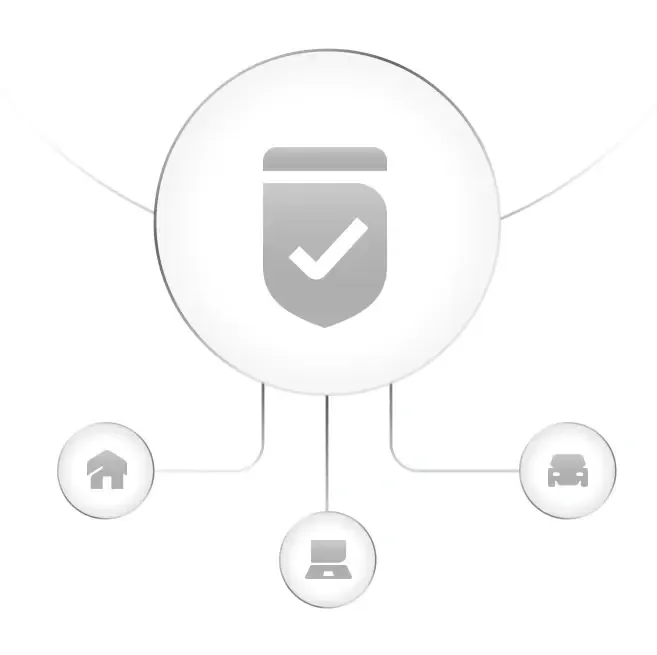Enterprise Internal Security Policy
Security isn't a luxury; it's the first line of defense. That's why the Security Policy details internal security measures. It discusses various aspects of security and protocols for protecting company assets, including buildings, equipment, employees, and visitors.

Created by
Ahmed Abdel Wahab
|
Human Resources Adviser
Share the calculator with an HR college
What’s included in the security policy?
The security & access control Policy includes requirements for protecting company assets, covering safeguards for buildings and equipment against both internal and external threats.
The Security policy establishes fundamental security rules that apply to everyone within the company, concerning access control and surveillance technologies to monitor activities and deter potential threats.
It also addresses identification methods for verifying credentials. In addition, the physical access control policy discusses visitor registration and identity verification procedures, and sets a general framework for how to act in emergencies, including lockdown procedures and evacuation protocols.
The security and access control policy and procedures also covers all security-related situations such as parking areas and visitor permits. Furthermore, it outlines the responsibilities of each individual, detailing the duties of security personnel in monitoring and verification and the roles of security supervisors in organizing shifts.
Security Policy - Table of contents
1. Objectives & Scope
2. Security Personnel Responsibilities
3. Building Entry & Exit Procedures
4. Visitor Registration Procedures
5. Parking Regulations
6. Security Guard Shift Schedules & Operations
7. Patrol Policies
8. Access Control for Restricted Areas
9. Warehouse Security
10. Emergency Security Measures
Why do you need a security policy?
Providing a secure work environment that protects individuals and property.
Reducing insurance expenses, security costs, and losses from theft and damage.
Ensuring the uninterrupted delivery of high-quality service and rapid recovery.
Engaging employees in the responsibility of protecting company assets.
How do you use the model?
Download the template and review the content.
Customize it with name, logo, security aspects of the company and its branches.
Make it detailed and comprehensive. Add it to Employee Handbook and Jisr HRMS.
Ensure compliance by getting security policy reviewed by a legal/HR expert.
See Jisr in action
Scale HR operations, manage talent, control spend – all in one platform with Jisr. Get started in weeks, not months.

FAQs
A common example of a security policy is restricting access to sensitive areas, such as secure data rooms, to authorized personnel only. This typically involves using access cards, biometric scanners, or keycard systems for identity verification as mentioned in the security policy template . Another example is securing a facility's perimeter with fencing, barriers, and gates to prevent unauthorized entry.
Security policies address various areas of concern, with three prominent types standing out:
- Physical Security Policy: This encompasses measures protecting the physical premises and people from threats like fires, theft, and unauthorized entry. It outlines employee access, identity authentication, facility requirements, and alarm systems.
- Workplace Security Policy: This is a fundamental, overarching policy outlining a company's general security goals for both internal and external threats. It includes basic rules like wearing ID badges, password guidelines.
- Digital Security Policy: This focuses on protecting software, data, and non-physical aspects of the business. It involves securing networks, using strong passwords, avoiding phishing, and ensuring reliable networks for physical security systems.
The 4 C's of security are a framework of four essential elements:
- Concealment: Hiding or protecting assets and vulnerabilities to prevent unauthorized access or detection, using measures like physical barriers or encryption.
- Control: Establishing mechanisms to regulate access, monitor activities, and enforce security protocols, including access control systems and surveillance.
- Communication: Ensuring timely information exchange and coordination among stakeholders for effective responses to security incidents and emergencies.
- Continuity: Maintaining essential functions and operations during disruptions, encompassing contingency planning, redundancy, and disaster recovery to ensure business resilience.
Depending on access requirements and security needs, organizations primarily employ four types of access control models:
- Mandatory Access Control (MAC): The most restrictive, where only the owner/custodian manages access. End-users have no control, often found in military/government settings.
- Role-Based Access Control (RBAC): Access is granted based on an individual's organizational role or position, simplifying administration as permissions are tied to the role, not the individual.
- Discretionary Access Control (DAC): The least restrictive, allowing individuals full control over objects they own, including setting permissions for others.
- Rule-Based Access Control (RBAC or RB-RBAC): Dynamically assigns roles based on defined criteria (e.g., time of day). Rules are often programmed by the administrator.
Access control is built on three core principles that determine who has the right to do what. These principles are Identification, Authentication, and Authorization. Identification is the process of determining who someone is, typically via user IDs or physical badges, uniquely identifying individuals. Authentication then verifies that the identified user is indeed who they claim to be, commonly through passwords, often enhanced with multifactor authentication, or biometric scans like fingerprints or facial recognition. Finally, Authorization dictates what specific resources the authenticated user is permitted to access, often managed through access control lists that define exact permissions for unique user IDs, or more efficiently via role-based access control where permissions are tied to a user's organizational role.